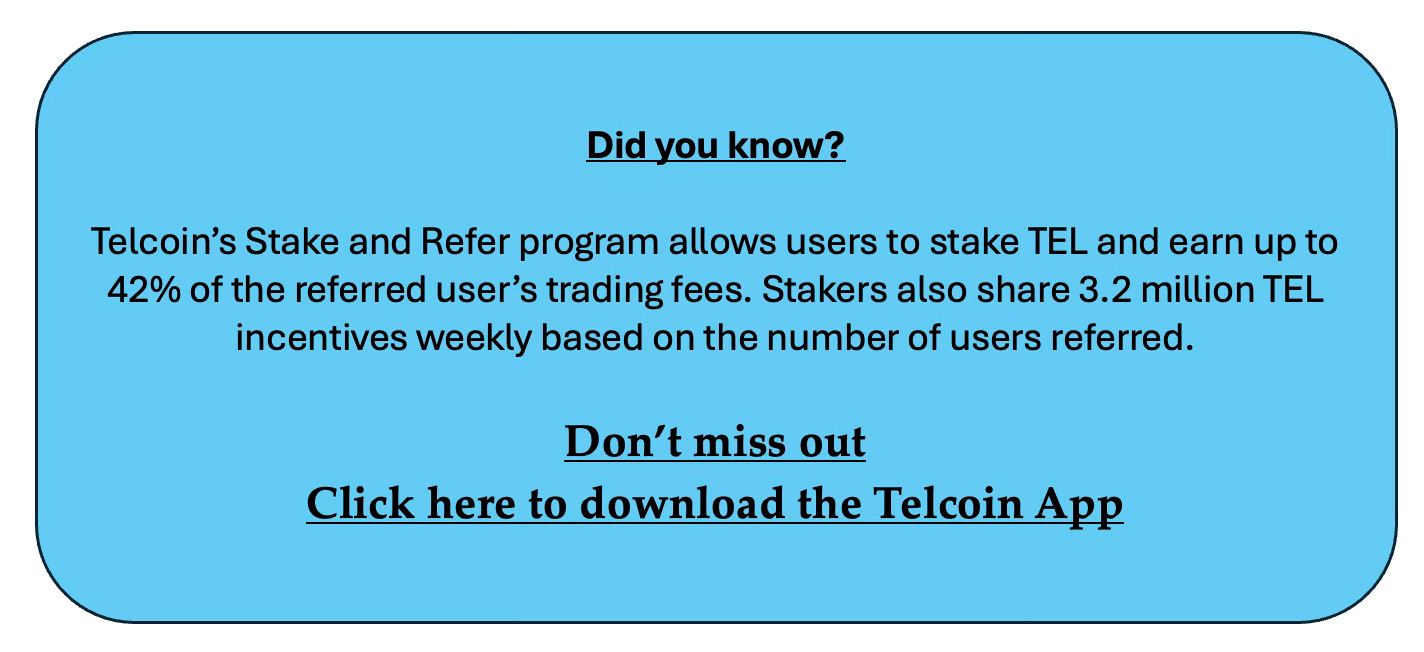Financial exclusion remains a significant barrier to development and economic participation in many parts of the world. Traditional financial systems are often expensive, centralized, and inaccessible, while decentralized finance (DeFi) solutions remain too complex for the average user. The Telcoin Application Network (TAN) is a bold solution to these intersecting challenges, offering a mobile-first, decentralized infrastructure that bridges everyday financial needs with blockchain technology. TAN is the application layer of the Telcoin Platform, comprising a network of mobile applications integrated with the Telcoin Platform to enable users to access its services. It empowers developers, particularly GSMA member mobile network operators (MNOs), to create decentralized applications that offer financial services directly through mobile devices. This integration allows users to use blockchain-based financial tools—such as remittances, savings, and payments—without needing traditional bank accounts or navigating complex DeFi platforms.
For ordinary users like you and me TAN, addresses at least eight major problems we face in banking, finance, and digital transactions.
1. Access to Financial Services
Problem: Over a billion people globally lack access to traditional banking. Opening an account requires documentation, fees, and proximity to a branch—barriers that exclude many, particularly in rural and low-income areas.
TAN’s Solution: TAN integrates decentralized financial services directly into mobile networks. Since most people have access to mobile phones, TAN enables them to transact, save, and access digital assets without needing a bank—bringing financial tools directly to the devices they already use.
2. Cost of Banking and Transactions (Including Remittances)
Problem: Traditional banking services and international remittances are expensive, with hidden fees, poor exchange rates, and delays. This places a burden on users, particularly migrant workers sending money home.
TAN’s Solution: TAN enables near-instant, low-fee transactions using blockchain infrastructure. Built on the Telcoin Network, it removes costly intermediaries and enables peer-to-peer payments. Users can send funds directly from their phones globally, securely, and affordably.
3. Reliance on Trusting Banks
Problem: Traditional financial systems require users to trust centralized institutions that hold and manage their money. This exposes users to fraud, mismanagement, or access restrictions.
TAN’s Solution: With TAN, users retain full custody of their assets through non-custodial TEL Safes—smart contract wallets they control. No third party can move or freeze funds. This removes the need for blind trust and empowers individuals to control their financial lives.
4. Lack of Integration Between Traditional Finance and DeFi
Problem: DeFi platforms often operate in silos and are disconnected from regulated financial infrastructure, limiting usability and compliance.
TAN’s Solution: TAN is designed to bridge this gap. It operates within a regulated blockchain environment while maintaining decentralization. This allows traditional financial players (e.g., mobile operators, fintechs) to offer compliant DeFi services, enabling secure interoperability between both worlds.
5. Lack of Integration Between Mobile Wallets
Problem: Users are often locked into specific mobile money platforms that can’t communicate with one another. This limits their ability to transact freely across networks or borders.
TAN’s Solution: TAN creates a universal, interoperable layer where financial apps can communicate across operators and jurisdictions. By using blockchain as a settlement layer and partnering with MNOs, TAN allows seamless cross-wallet transactions—unlocking full portability for users.
6. Lack of Merchant Applications on Blockchain
Problem: Most blockchain systems are not built for real-world commerce. They lack simple, scalable tools for merchants to accept payments, issue receipts, or manage business finances.
TAN’s Solution: TAN enables developers to build user-facing applications on its infrastructure. This includes merchant tools like point-of-sale systems, loyalty rewards, and crypto invoicing—all secured by smart contracts. It paves the way for blockchain to power real-world economic activity.
7. Access to Blockchain-Based Financial Services
Problem: While DeFi holds great promise, most people find it too technical or risky to use. Complex interfaces, unfamiliar terminology, and private key management create high entry barriers.
TAN’s Solution: TAN hides the complexity behind mobile-friendly, intuitive applications. By embedding services into MNO platforms and simplifying user interaction, it brings the benefits of DeFi to everyday users—without requiring them to understand blockchain.
8. Centralized Ownership of Financial Services
Problem: In traditional finance and fintech, a few corporations own and control the infrastructure. This centralization leads to profit concentration, limited innovation, and reduced user empowerment.
TAN’s Solution: TAN decentralizes financial infrastructure. Anyone can build on the network, and services run on transparent, user-governed smart contracts. Ownership shifts from corporations to users, developers, and communities—making finance more open, fair, and competitive.
Conclusion
TAN addresses real-world financial pain points—from access and affordability to decentralization and usability. It replaces outdated systems with a mobile-first, user-controlled, blockchain-powered alternative—paving the way for financial inclusion on a global scale.
Disclaimer
The information and content (collectively 'information') provided herein are general information. The authors do not guarantee the suitability or potential value of any information or particular investment source. Any information herein is not intended, nor does it constitute financial, tax, legal, investment, or other advice. The authors have no affiliation with Telcoin or other persons or companies referred to in this article. The information in this article is based on the sources used.






Really appreciate your reply and the insight into Telcoin’s RegFi approach. I understand how Telcoin is using stablecoins like eUSD to tackle inefficiencies in remittances, and I see the logic in telecom integration helping to drive adoption.
What I’m still trying to pin down is the actual mechanism that creates and sustains scarcity for $TEL. You mentioned that scarcity is currently very high (99% circulating), which makes sense. But going forward, as more people use the platform to send or receive money in stablecoins like eUSD, what specifically drives continued demand or removes $TEL from circulation?
To be more precise — is there a token sink model in place?
By that I mean: a built-in system where $TEL is either used up, locked up, or permanently removed from circulation as a function of platform activity. Token sink models often include things like:
burning a portion of transaction fees,
staking mechanisms that lock tokens in exchange for services or rewards,
paying for platform functions exclusively in $TEL,
or requiring $TEL to unlock premium features or governance rights.
If Telcoin’s utility token isn’t directly involved in stablecoin-based transactions, or if fees are settled in eUSD rather than $TEL, then it’s not clear how $TEL appreciates based on actual platform usage.
Would love to hear your take on how that’s structured — and whether Telcoin’s model includes a sustainable feedback loop that truly links adoption to token value.
Thanks again for engaging.